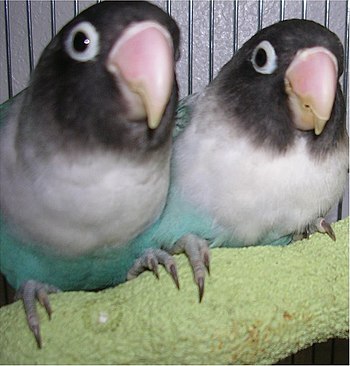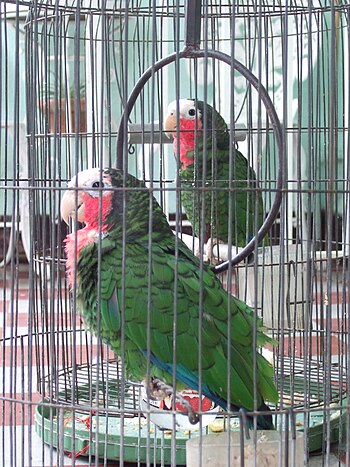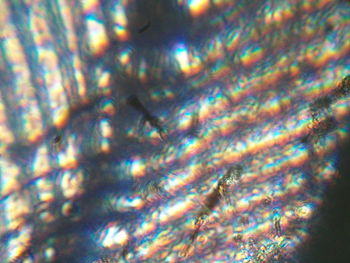 |
| English: Budgerigar (Melopsittacus undulatus). Pet bird named Sophie on a cage. (Photo credit: Wikipedia) |
 |
| A pet Sun Parakeet (also known as a Sun Conure) in parrot cage. (Photo credit: Wikipedia) |
 |
| A pet Congo African Grey Parrot in India. (Photo credit: Wikipedia) |
By Lee Dobbins
While a bird is an easy pet to care for, they do require just as much commitment and preparation as any other type of pet. Whether you are buying a small parakeet or an large parrot, you should make sure that you are prepared to care for your new feathered friend properly.
One thing that all pets, including birds need is attention. If your schedule has you working long hours and not spending much time at home, perhaps you should consider a fish tank instead of a bird. A bird cannot be left in it's cage alone all the time and still be expected to be friendly on the odd days when you feel like playing with it. Some birds require more interaction than others, but they are social creatures and need you to set aside some time each day to play with them. You can use this time to teach them tricks and strengthen the bond between you.
When considering bringing a bird into your home, you must think about the safety of your new pet. Are there other pets in the house that could be threatening to the bird? Are there tiny nooks and crannies that a bird could get into and hurt himself? Do the other members of your family leave the windows and doors open where the bird could fly out and be lost? All these things must be considered for the safety of your new pet
The purchase and placement of his cage is another consideration. You must buy a cage that is the right size for your bird. Many parrots become quite adept at opening their own cage doors so you should consider how easy the cage is to break out of. The cage should be made out of a safe material and have bars spaced in such a way that the bird cannot get his head stuck in between them. There should be no sharp edges and their should be appropriate food and water dishes as well as perches inside the cage. Cages can be expensive, but don't skimp on this as it is your pets new home!
Before you buy the cage, consider where you will be keeping it. It is best if the cage can be in a quiet corner but near family activities as your bird really wants to be part of the family. You should keep it out of direct sunlight, and away from any drafts or anywhere that could have a sudden change in temperature like in front of the heater or air conditions. Avoid placing the cage in the kitchen as fumes and hot surfaces can be hazardous. Be aware that the fumes from nonstick pans can be deadly to a pet bird, so make sure you get rid of all your non stick pans before bringing your bird home. Of course, you will want to keep the cage out of the path of traffic so you need to buy a cage that is the appropriate size for your bird as well as the right size to fit in the intended area.
Depending on the size of your bird, you may want to consider the level of noise that he will produce. Parakeets make little chirpy noises that, for the most part, are not annoying. Conures, on the other hand have a shrill call that goes right through you. Most happy birds will not yell constantly, but it is natural for them to call out at times so make sure you (and your neighbors) can handle the level of noise produced by the bird.
Finally, make sure that you want to commit to the care that is necessary to have a happy healthy bird. You'll need to clean out the cage daily and make sure you provide fresh food and water. Food your bird a varied diet and have him checked by a vet (preferably one who specializes in birds) every year.
Birds can be very rewarding pets and take minimal care but they must be provided with a comfortable and safe environment and your companionship in order to thrive. Many birds can live for 20 years or more, so you are making a long commitment when you bring home your new feathered friend. This commitment to care and companionship is well worth it, however, as the rewards of owning these enchanting creatures are many!
Lee Dobbins is owner and editor of [http://www.epet-center.com]ePet Pet Center where you can find information on every type of pet including [http://www.epet-center.com/pet-birds.html]pet birds.
Article Source: [http://EzineArticles.com/?Things-To-Think-About-Before-You-Buy-A-Pet-Bird&id=30787] Things To Think About Before You Buy A Pet Bird














 Bird Cages Buying Guide
Bird Cages Buying Guide Pet Supplies Buying Guide
Pet Supplies Buying Guide Tips and Tricks for Surviving the Breeding Season with Parrots
Tips and Tricks for Surviving the Breeding Season with Parrots
